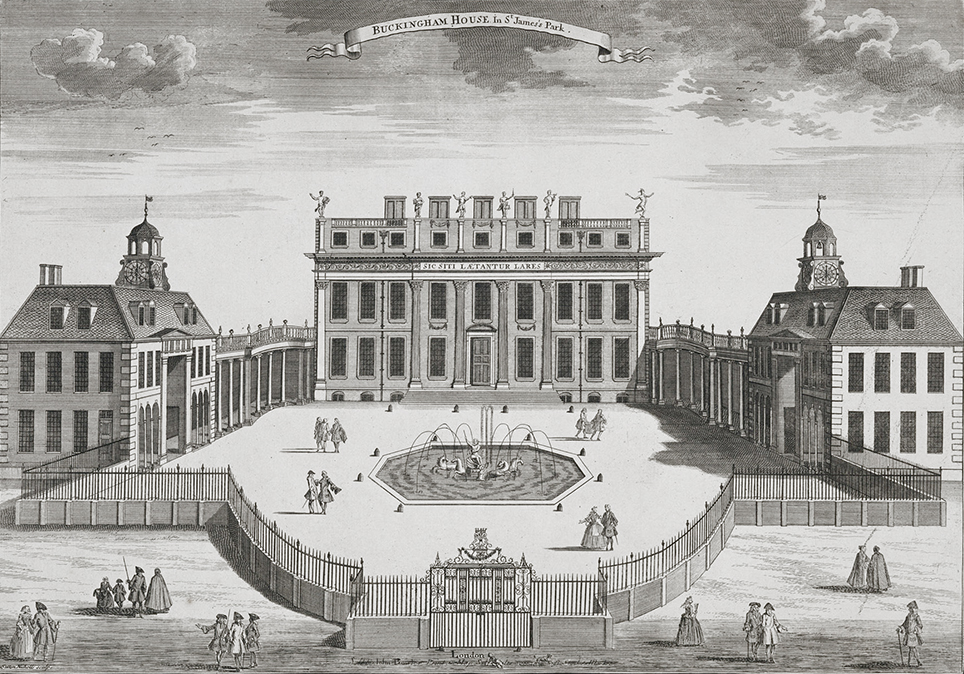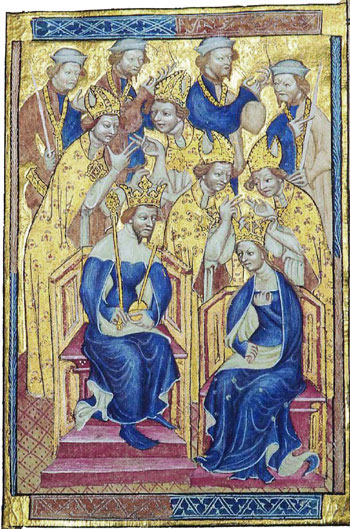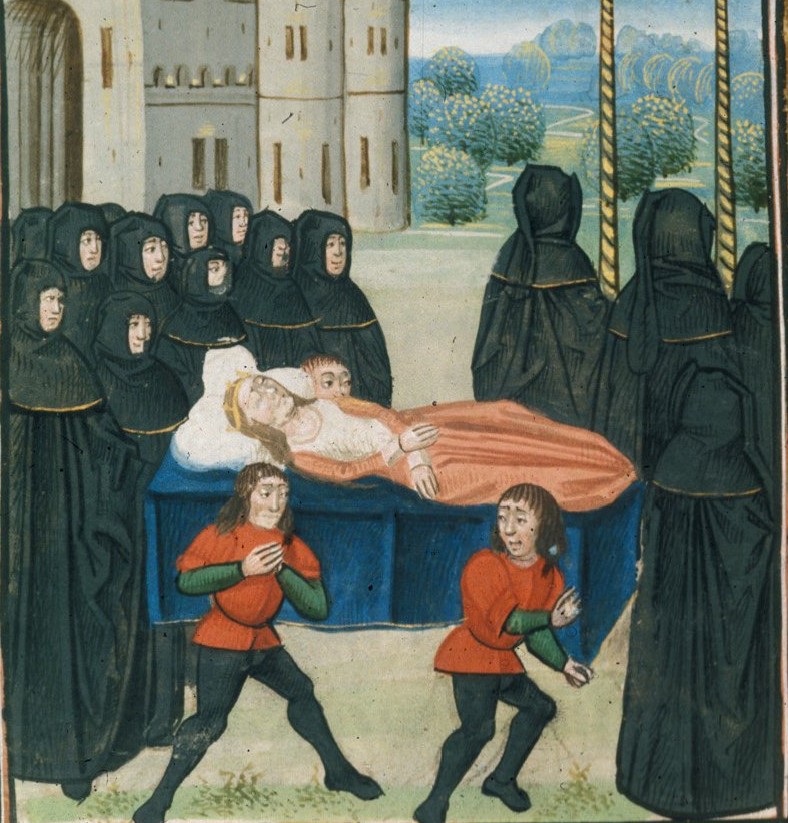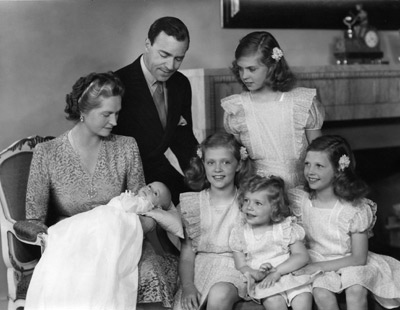by Susan Flantzer © Unofficial Royalty 2014
Her Royal Highness The Duchess of Gloucester is the wife of Prince Richard, Duke of Gloucester. Birgitte Eva Henrisksen was born in Thomas Kingos Parish in Odense, Denmark on June 20, 1946. She is the daughter of Asger Preben Knud Wissing Henriksen, a lawyer, and Vivian van Deurs. When her parents divorced, Birgitte started using her mother’s maiden name, van Deurs, as her surname.
Birgitte received her early education in her hometown of Odense, Denmark and her secondary education at Brillantmont International School in Lausanne, Switzerland. She also attended the Margrethe School in Copenhagen, Denmark also known as the Scandinavian Academy of International Fashion and Design. The school’s name refers to its first patron, Princess Margrethe of Denmark who married Prince René of Bourbon-Parma. Princess Benedikte, sister of Queen Margrethe II of Denmark and Princess Elisabeth of Denmark, cousin of Queen Margrethe II also attended Margrethe School. Princess Benedikte became the patron of the school.
It was while attending the Bell School of Languages in Cambridge, England that Birgitte met her husband, Prince Richard of Gloucester. Prince Richard was studying architecture at Magdalene College, Cambridge University. As the second son of Prince Henry, Duke of Gloucester (third son of King George V of the United Kingdom), Prince Richard expected to have to earn his own way and planned a career as an architect as his elder brother Prince William would become Duke of Gloucester upon their father’s death. Prince Richard received his Bachelor of Arts in June 1966 and subsequently received his Master of Arts in 1971. Upon completion of his training, Prince Richard went into practice as a partner in a London architectural firm. In 1971, Birgitte was also working in London as a secretary at the Danish Embassy.
Birgitte and Prince Richard became engaged in February 1972 and were married on July 8, 1972, at St. Andrew’s Church in Barnwell, Northamptonshire, England nearby the Gloucester family home Barnwell Manor. Birgitte was then styled Her Royal Highness Princess Richard of Gloucester. Prince Richard’s father was unable to attend the wedding. Prince Henry, Duke of Gloucester had suffered his first stroke in 1965 and subsequent strokes required him to use a wheelchair and rendered him unable to speak for his remaining years.

First row, seated: Princess Alice of Albany; Princess Alice, Duchess of Gloucester; The Queen Mother; Vivian van Deurs Second row, standing: Prince Michael of Kent; Princess Margaret; The Prince of Wales; Prince Richard of Gloucester; Birgitte van Deurs; Prince William of Gloucester; two members of Birgitte’s family; Asger Henriksen; Photo Credit – orderofsplendor.blogspot.com
Shortly after the wedding, on August 28, 1972, Prince Richard’s elder brother Prince William crashed his plane in a flying competition and died. (See Unofficial Royalty: Tragedy in the British Royal Family at the end of August, scroll down) This terrible tragedy left Prince Richard first in line to his father’s dukedom and increased his family obligations and royal duties. Therefore, he resigned his partnership in the architectural firm and began to represent his cousin, Queen Elizabeth II, at royal engagements.
On June 10, 1974, Prince Henry, Duke of Gloucester died and Prince Richard succeeded his father as Duke of Gloucester. Birgitte was then styled Her Royal Highness The Duchess of Gloucester. The Duke and Duchess of Gloucester’s official residence is at Kensington Palace in London. In 2019, they moved from the large Apartment 1 to the Old Stables, a smaller residence that is also located within the Kensington Palace grounds. They have leased out their private home Barnwell Manor in Northamptonshire, England since 1994.
Embed from Getty Images
Princess Alice with her son the Duke of Gloucester, daughter-in-law the Duchess of Gloucester and her grandchildren, Lady Davina Windsor, Lady Rose Windsor, and Alexander the Earl of Ulster celebrating her 100th birthday in 2001
The Duke and Duchess of Gloucester have three children:
- Alexander Patrick Gregers Richard Windsor, Earl of Ulster (born 1974) married Claire Booth. The couple had two children:
- Xan Richard Anders Windsor, Lord Culloden (born 2007)
- Lady Cosima Rose Alexandra Windsor (born 2010)
- The Lady Davina Elizabeth Alice Benedikte Lewis (born 1977), married Gary Lewis, divorced in 2018. The couple had two children:
- Senna Kowhai Lewis (born 2010)
- Tāne Mahuta Lewis (born 2012)
- The Lady Rose Victoria Birgitte Louise Gilman (born 1980), married George Gilman. The couple had two children:
- Lyla Beatrix Christabel Gilman (born 2010)
- Rufus Gilman (born 2012)
Embed from Getty Images
The Duke and Duchess of Gloucester attending the wedding of Lady Gabriella Windsor at St George’s Chapel, Windsor Castle in 2019
The Duchess of Gloucester carried out many public engagements on behalf of her patronages and organizations and in support of her husband’s first cousin Queen Elizabeth II. She also supported The Queen at official engagements such as state banquets, religious services, garden parties, and receptions. The Duchess of Gloucester also made official overseas visits as a representative of The Queen with and without her husband. She continues to carry out engagements and represents her husband’s first cousin once removed King Charles III.
In 2024, The Duchess of Gloucester was made a Lady Companion of the Order of the Garter by King Charles III. This appointment is very significant, as Royal spouses (other than the spouse of the Sovereign or the Heir) are not traditionally invested in the Order of the Garter. This is in recognition of her many years of support to both Queen Elizabeth II and King Charles III.
The Duchess’ patronages include:
- Bliss, the special care baby charity
- St Paul’s Cathedral School
- St John’s School, Leatherhead
- Bridewell Royal Hospital (King Edward’s School, Witley)
- Royal Academy of Music
This article is the intellectual property of Unofficial Royalty and is NOT TO BE COPIED, EDITED, OR POSTED IN ANY FORM ON ANOTHER WEBSITE under any circumstances. It is permissible to use a link that directs to Unofficial Royalty.


























